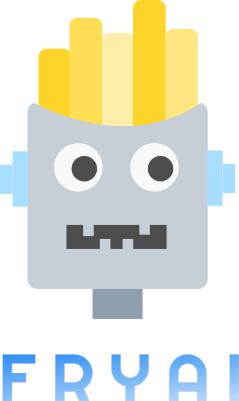- FryAI
- Posts
- Google's Super Bowl blunder
Google's Super Bowl blunder

Good morning! A new week means new AI releases, tools, drama, and use cases—we’ve got you covered with it all. 😁
🤯 MYSTERY AI LINK 🤯
(The mystery link can lead to ANYTHING AI-related: tools, memes, articles, videos, and more…)
Today’s Menu
Appetizer: Google’s Super Bowl blunder 🏈
Entrée: Google releases new versions of Gemini 2 🦾
Dessert: AI reads 2,000-year-old scroll 📜
🔨 AI TOOLS OF THE DAY
👩🏫 Tutorly: A 24/7 tutor for any topic. → Check it out
🔍 Needle: Easily find information from your data. → Check it out
✍️ BlackInk: Generate your next tattoo. → Check it out
GOOGLE’S SUPER BOWL BLUNDER 🏈
Q: What do Cowboys fans do after they win the Super Bowl?
A: Turn off their X-Box. 🎮
What happened? Prior to the Super Bowl, Google quietly updated its $8 million commercial featuring its AI tool, Gemini, after an incorrect statistic about Gouda cheese raised eyebrows.
Want the details? Google released its Super Bowl ad early, which featured a Wisconsin cheese market. In the original ad, Gemini’s response to the owner of the market claimed that Gouda made up “50 to 60 percent of the world’s cheese consumption.” This claim was removed shortly before the big game, with the AI instead stating that Gouda is simply “one of the most popular cheeses in the world.” While Google initially defended Gemini’s accuracy, experts, including Cornell University professor Andrew Novakovic, confirmed the stat was incorrect. It appears Gemini pulled the figure from an unreliable source, Cheese.com. Google spokesperson Michele Wyman explained that after consulting a cheese expert, they updated the AI’s response in the commercial. So what you saw in the commercial yesterday was a disingenuous depiction of Gemini’s outputs! While Gemini includes a disclaimer that its responses aren’t always factual, businesses relying on AI tools need accuracy, not just convenience.
GOOGLE RELEASES NEW VERSIONS OF GEMINI 2 🦾
Q: Where does Google go when it gets thirsty?
A: The search “bar.” 🍺
What’s new? Google has updated and released new versions of Gemini 2 to the public.
What are the new models?
Gemini 2.0 Flash: A high-speed, efficient model designed for large-scale, high-frequency tasks with strong multimodal reasoning capabilities.
Available in: Gemini API, Google AI Studio, Vertex AI, and the Gemini app.
Gemini 2.0 Pro Experimental: The most advanced model for coding and complex problem-solving, featuring the largest context window (2 million tokens) for deep reasoning.
Available in: Google AI Studio, Vertex AI, and the Gemini app (for Gemini Advanced users).
Gemini 2.0 Flash-Lite: A cost-efficient model that improves upon 1.5 Flash, maintaining speed while enhancing performance for high-volume tasks.
Available in: Google AI Studio and Vertex AI (public preview).
Gemini 2.0 Flash Thinking Experimental: A version of Flash optimized for reasoning through complex problems while maintaining speed.
Available in: Gemini app (in model dropdown on desktop and mobile).
AI READS 2,000-YEAR-OLD SCROLL 📜
Q: What was the best way to get rich in ancient times?
A: That’s easy, just prophet. 😆
What happened? Researchers have successfully used AI to read an ancient scroll that was charred in the AD79 eruption of Mount Vesuvius.
Want the details? The scroll, found in the library of a Roman mansion in Herculaneum, was too fragile to open without disintegrating. Using 3D X-ray imaging and AI, researchers at the Bodleian Libraries in Oxford virtually unrolled the papyrus and deciphered columns of text, including the Ancient Greek word διατροπή, meaning disgust. This breakthrough is part of the Vesuvius Challenge, which financially rewards innovative methods for deciphering these ancient texts.
Why is this significant? This achievement demonstrates AI’s potential in historical preservation and archaeology, allowing scholars to access and study invaluable ancient texts that have remained unread for nearly 2,000 years.
“It’s an incredible moment in history as librarians, computer scientists and scholars of the classical period are collaborating to see the unseen. The astonishing strides forward made with imaging and AI are enabling us to look inside scrolls that have not been read for almost 2,000 years.”
MONEY MONDAY 🤑
People are discovering innovative (and sometimes wacky) ways to make money using AI. Check out today’s featured video:
HAS AI REACHED SINGULARITY? CHECK OUT THE FRY METER BELOW:
What do ya think of this latest newsletter? |


